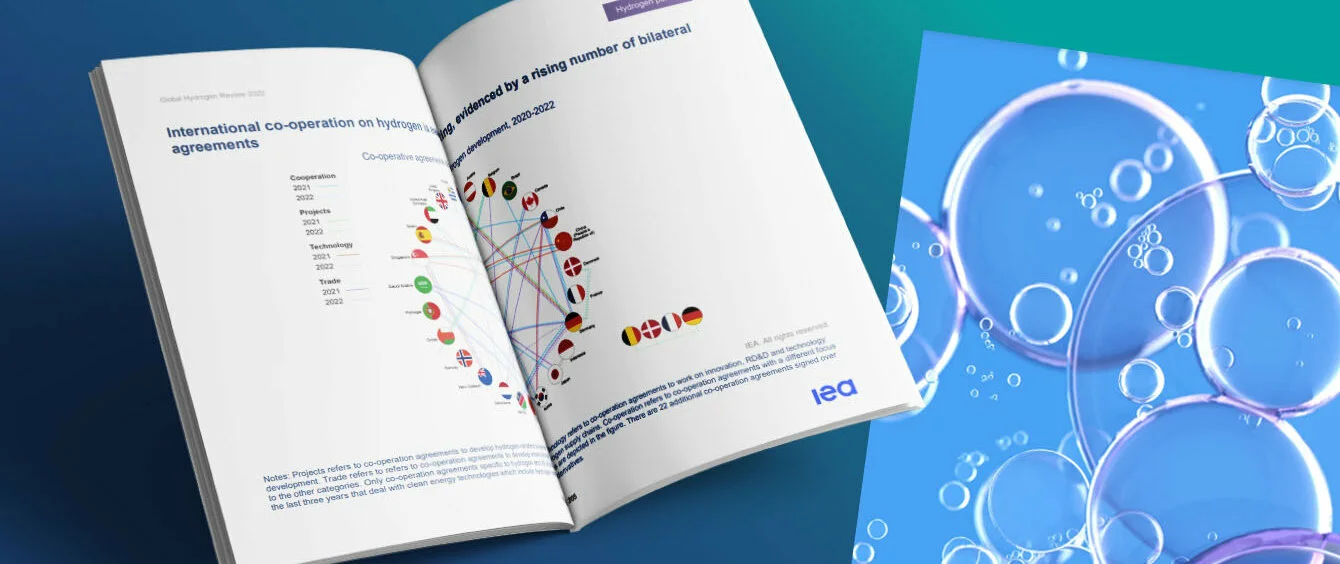“There are mounting indications of hydrogen being an important part of the transition to an affordable, secure and clean energy system. However, major progress must be made in technology, regulation and demand for hydrogen to unleash its full potential,” says Director Fatih Birol, summarising the findings of the latest edition of the Global Hydrogen Review by the International Energy Agency (IEA).
Hydrogen experiences greater demand and declining costs
As set out by Mr. Birol, the report cites numerous pleasing developments demonstrating the fact that the hydrogen economy is gaining traction:
- Estimates have the recent increase in demand for hydrogen becoming much more pronounced through to 2030.
- Installed generation capacity based on climate-friendly hydrogen a niche product to date will be expanded significantly through to 2030.
- Manufacturers of electrolysers, which produce green hydrogen using electricity from renewables, will grow production capacity several times over during this decade. This will drive down costs substantially.
Climate-friendly technology
In 2021, global hydrogen consumption totalled 94 million metric tons, hitting a new all-time high. This substantial demand was due to the economic recovery following the COVID-19 pandemic, with hydrogen usage rising considerably in the chemical industry and in refineries. Pro-climate technologies accounted for as much as 40,000 metric tons of hydrogen.
Examples mentioned in the report include the first fleet of hydrogen trains in Germany and a pilot project in which hydrogen is used to produce low-carbon steel via a process known as direct reduction. The pilot is a lighthouse for projects in the steel industry. In addition, over 100 ventures in the shipping sector are dedicated to exploring the usage and transport of hydrogen as well as of hydrogen-based fuels.
Thanks in part to new deployment options, IEA experts forecast an increase in demand for hydrogen to 115 million metric tons by 2030. However, the climate targets self-imposed by the governments of the world’s nation states call for 130 million metric tons of production by then. The path to net-zero emissions by 2050 is even more ambitious, envisaging 200 million metric tons.
Low-carbon hydrogen becomes a commodity
If hydrogen is to make a fundamental contribution to achieving climate goals, it must be produced by climate-friendly methods. Last year, however, just a million of the 94 million metric tons was produced employing low-carbon processes. This was done solely in plants that convert fossil fuels such as natural gas into hydrogen and capture, utilise or store the resulting carbon dioxide, a process referred to as CCUS. But this may change soon. IEA analysts claim that the new project pipeline is growing at an impressive pace.
They state that up to 16 to 24 million metric tons of green hydrogen could be produced every year through to 2030 if all the announced projects are executed. This means that the eco-fuel could account for as much as one-fifth of global demand by then. According to IEA calculations, this would involve 9 to 14 million metric tons stemming from electrolysers, with 7 to 10 million metric tons added by facilities with integrated CCUS.
Production of green hydrogen that is being tested by scientists and engineers in experimental plants will thus become a commercial success. Assuming that all announced ventures are implemented, electrolysers with an aggregate capacity of 134 to 240 gigawatts (GW) could be built the world over. By comparison, South America’s total renewable installed capacity currently amounts to 240 GW.
Significant decline in electrolyser costs
It goes without saying that these impressive numbers of new green hydrogen factories can only materialise if electrolyser production is up to the task. Therefore, IEA experts project annual production will be expanded to 60 GW from 8 GW at present.
Mass production and upscaling will drive down electrolyser costs considerably, seeing them drop by as much as 70 percent by 2030. This will also reduce the cost of producing green hydrogen, which according to the IEA is already close to becoming a competitive alternative to conventional hydrogen production in view of the significant rise in fossil fuel prices. This holds true at least for regions with conditions favourable to renewables.
Need for additional incentives to stimulate demand
In its report, the IEA identifies a number of positive indications of the hydrogen market picking up steam and above all low-carbon technologies gaining increasing significance. However, this should not be taken for granted as many of the projects mentioned are in the planning phase. Based on the report, a mere four percent are under construction or have received investment approval. This low quota is due in part to uncertain demand, the absence of a legal framework, and insufficient transport options.
Moreover, the IEA is critical of the lack of political support conducive to creating worldwide demand for climate-friendly hydrogen. After all, businesses will only invest in the establishment of the hydrogen economy on the basis of enforceable supply agreements. And this is indispensable when it comes to hitting climate targets.
